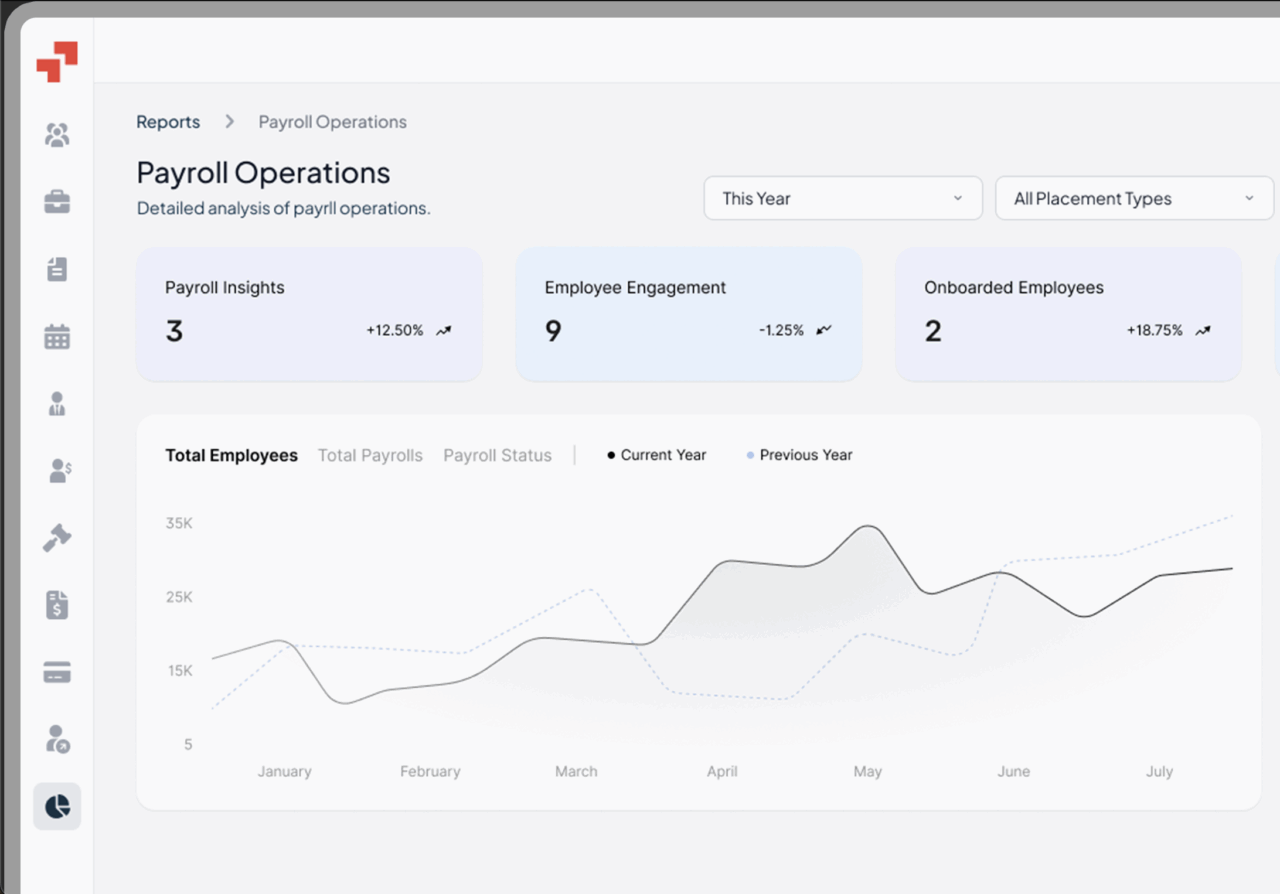Global Workforce GlossaryWhat is Holiday Pay?
Related Terms
Floating Holiday
Tax Identification Number
W2 Employee
Holiday Pay
Form I-9
Holiday pay is compensation provided to employees for time off during recognised holidays, including federal holidays, or premium wages paid to those working on holidays.
In the U.S., federal law doesn’t mandate holiday pay, but many employers offer it as part of competitive compensation packages to attract and retain talent.
For global companies, holiday pay becomes exponentially more complex. Each jurisdiction defines different designated holidays, compensation rates, and legal requirements. While the U.S. treats holiday pay as largely voluntary, the UK mandates 5.6 weeks of paid holiday annually, and European countries typically require 20-30 days of paid vacation plus public holidays.
The strategic importance extends beyond compliance. Companies that structure holiday pay thoughtfully, ensuring a fair holiday pay structure, can differentiate themselves in competitive talent markets, particularly when hiring senior executives or specialized technical roles.
How Much is Holiday Pay?
Holiday pay rates vary dramatically by jurisdiction and company policy. In the U.S., companies offering premium holiday pay typically provide time-and-a-half (1.5x regular wages) or double-time (2x regular wages) for employees working on holidays. Federal employees receive premium pay equal to their basic rate plus their regular rate for holiday work.
For salaried employees, holiday pay often means receiving full salary while taking the day off. Hourly workers may receive their average daily pay or a standardised eight-hour payment.
Internationally, calculations follow different models. The UK requires holiday pay to reflect an employee’s normal earnings based on hours worked , including regular overtime, commission, and certain bonuses averaged over a reference period. European Union regulations generally require holiday pay to match normal working wages.
The business impact is significant. A technology startup expanding from San Francisco to London might discover their holiday pay costs increase by 40% due to UK statutory requirements.
Is Holiday Pay Required by Law?
Holiday pay legal requirements create a complex compliance landscape. In the United States, the Fair Labor Standards Act (FLSA) does not require private companies to provide holiday pay according to specific holiday pay rules , making it entirely voluntary.
However, this voluntary approach is the exception globally. The UK mandates a legal minimum of 5.6 weeks (28 days) of paid holiday annually as part of employee benefits . European Union directives require member states to provide at least 20 working days of paid annual leave.
The compliance implications are severe for global companies. Failing to provide mandatory holiday pay can result in employment tribunal claims and regulatory penalties. In the UK, employees can claim up to two years of underpaid holiday pay, creating significant financial exposure.
For executives planning international expansion, this shift requires careful financial modeling and often represents 8-15% of total compensation costs in European markets.
How does Holiday Pay Work?
Holiday Pay in the US
Holiday pay in the United States operates on a purely voluntary basis for private employers. Most U.S. companies that provide holiday pay for full time employees llow three models: paid time off for holidays, premium pay for holiday work (typically 1.5x to 2x regular rates), or floating holidays.
The strategic advantage lies in using holiday pay to compete for talent without regulatory constraints. Companies can design innovative packages that align with their culture and workforce needs.
Holiday Pay in the UK
The UK’s system requires significant operational adjustments for U.S. companies expanding across the Atlantic. UK workers are entitled to 5.6 weeks of paid holiday annually, which can include public holidays or be provided in addition to them.
The calculation complexity extends beyond simple daily rates. Holiday pay must reflect normal earnings, including regular overtime, commission payments, and certain performance bonuses averaged over reference periods.
Holiday Pay in Europe
European holiday pay regulations prioritize work-life balance while ensuring employees aren’t financially disadvantaged. Most EU countries exceed minimum requirements, with Germany, France, and Nordic countries often providing 25+ days of annual leave plus extensive public holidays.
For U.S. companies, European expansion requires fundamental shifts in workforce budgeting. Holiday pay costs typically represent 12-18% of total compensation expenses, compared to 3-6% for voluntary U.S. programs.
Holiday Pay in Australia
Australia’s system combines statutory minimums with industry-specific variations. The Fair Work Act provides baseline entitlements, but awards and enterprise agreements often enhance these minimums significantly.
Australian employees typically receive four weeks of annual leave plus public holidays, with shift workers receiving additional leave loadings, effectively increasing holiday pay rates by 15-20%.
Holiday Pay Policy
Developing an effective holiday pay policy requires balancing legal compliance, competitive positioning, and operational efficiency across multiple jurisdictions. A comprehensive policy should address eligibility criteria, calculation methodologies, holiday schedules, and administrative procedures.
The policy must consider operational realities. Companies requiring 24/7 operations need clear frameworks for holiday staffing and premium pay rates. Technology companies with global teams must navigate time zones and different national holidays simultaneously.
Implementation success depends on robust systems and training. Payroll systems must handle complex calculations across jurisdictions, and managers need training on policy application.
How to Calculate Holiday Pay?
How to Calculate Holiday Pay for Salaried Employees
For salaried employees taking holidays off, calculation is straightforward: they continue receiving regular salary. Complexity arises when salaried employees work during holidays. To calculate daily rates, divide annual salary by working days (typically 250-260).
Example: An employee earning $75,000 annually with 250 working days has a daily rate of $300. With time-and-a-half for holiday work, they receive regular salary plus $450.
How to Calculate Holiday Pay for Hourly Employees
For time off, multiply the employee’s regular hourly rate by holiday hours (typically 8). An employee earning $25/hour receives $200 for an 8-hour holiday.
For holiday work with time-and-a-half: regular pay ($25) + premium ($12.50) = $37.50 per hour. Double-time calculations provide twice the regular rate: $50/hour for holiday work.
Calculating Holiday Pay for PTO
When employees use PTO during holidays, calculations depend on company policy. Traditional PTO systems typically don’t deduct PTO hours for recognized company holidays, preserving PTO banks for personal use.
Some companies offer PTO bonuses for unused holiday time, providing additional value when employees work during company holidays instead of taking them off.
Calculating Holiday Pay for Working During a Holiday
Premium pay requires understanding base rates and premium multipliers. Time-and-a-half multiplies regular rates by 1.5. For $20/hour employee working 4 holiday hours: $20 × 1.5 = $30/hour × 4 hours = $120 total premium.
Complex scenarios arise when holiday work intersects with weekly overtime, requiring careful analysis of daily and weekly thresholds.
Holiday Pay Examples
What is Holiday Pay for $16 an Hour?
For $16/hour employees taking holidays off, 8-hour payment equals $128. For holiday work at time-and-a-half: $24/hour ($16 × 1.5), resulting in $192 for 8-hour shift—$64 in premium compensation.
Double-time equals $32/hour, resulting in $256 for 8-hour shift, representing $128 in additional compensation beyond regular wages.
What is Time and a Half for $16 an Hour?
Time-and-a-half for $16/hour equals $24/hour. The additional $8/hour represents 50% premium that makes holiday work attractive while ensuring adequate staffing.
How Much is Holiday Pay for $15 an Hour?
For $15/hour employees, holiday time off with 8-hour compensation equals $120. Time-and-a-half holiday work equals $22.50/hour, resulting in $180 for 8-hour shift with $60 premium.
FAQs
What is the Difference Between Holiday Pay and PTO?
Holiday pay compensates for recognized holidays through time off with pay or premium wages, emphasizing the importance of offering holiday pay in competitive market . PTO encompasses broader paid time-off including vacation and personal days. The key distinction: holiday pay applies to predetermined employer-set dates, while PTO allows employee choice in timing.
Holiday Pay vs Time-and-a-Half
Holiday pay is compensation related to recognized holidays. Time-and-a-half is premium rate calculation (1.5x regular wages) typically for overtime but can apply to holiday work. They can overlap when companies use time-and-a-half rates for holiday work.
Holiday Pay vs Overtime
Overtime is legally mandated for non-exempt employees exceeding 40 hours weekly, while holiday pay remains largely voluntary for U.S. private employers. Complexity arises when holiday work contributes to overtime thresholds, potentially triggering both premiums.
Are Holiday Pay Taxable?
Holiday pay is subject to same tax treatment as regular wages, including federal, state, local income taxes, plus Social Security and Medicare taxes. The IRS treats holiday pay as supplemental wages, with premium portions fully taxable.
Is There Holiday Pay for Part-Time Employees?
Part-time eligibility depends on company policy and jurisdiction requirements. International requirements often mandate pro-rated holiday pay for part-time employees. UK regulations require part-time workers to receive the same 5.6 weeks annually, calculated based on working patterns.
Take Action: Transform Your Global Holiday Pay Strategy
Consider this scenario: You’re expanding to hire senior developers in the UK and Germany, and navigating labor day requirements . Your “voluntary holiday pay” approach works domestically, but European expansion requires mandatory holiday pay representing 15% of total compensation costs. Without proper planning, this could derail your hiring timeline and budget.
Smart companies turn this challenge into competitive advantage. By designing comprehensive holiday pay strategies early, including provisions for extra pay for holiday work you attract top European talent while maintaining cost predictability and regulatory compliance.
Ready to model the costs and compliance requirements for your international expansion? Schedule a 15-minute strategy call to map your global holiday pay framework.
Hire the Best Talent, Anywhere






